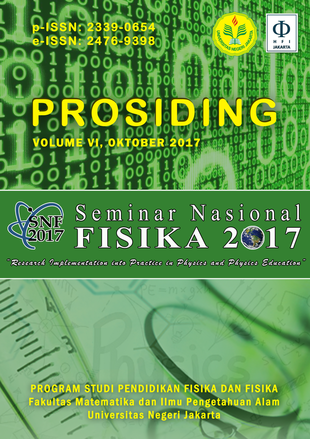ANALISIS DAMPAK FLARE TIPE X SEPTEMBER 2014 TERHADAP SISTEM NAVIGASI DAN POSISI BERBASIS SATELIT DARI PENGAMATAN GISTM KUPANG
DOI:
https://doi.org/10.21009/03.SNF2017.02.EPA.11Abstract
Rapid changes in the ionospheric electron density may cause the satellite signals disturbed, because ionosphere layer is a dispersive medium for radio satellite frequencies. Electron density and ions in the ionosphere increases with increasing of solar activity and will have an impact on the delay of the radio wave propagation from the satellite to the receiver. The delay effects to the level of accuracy of position measurement on navigation satellite systems (Global Navigation Satellite System, GNSS). On September 10, 2014, a class X1.6 of the flare was released at 17:45 UTC, accompanied by a coronal mass ejection (CME). As a result, on September 12, 2014, a strong category of geomagnetic storm occurred. The ionospheric response to the geomagnetic storms has caused a positive storm due to an increase in electron content. Based on TEC measurement by using GISTM Bandung and Kupang, there were an increase of TEC with maximum deviation reached 28 TEC Unit for Bandung station and 35 TEC for Kupang station. The critical frequency of the ionosphere F layer (foF2) also increased during geomagnetic storms, about 4.5 MHz, taken from the ionsonde CADI at Kupang station. Results show the analysis of the absolute position of GPS measurements from fixed GPS station at Darwin Australia during the main phase of geomagnetic storm on September 12, 2014 has caused vertical errors reached more than 20 meters.
Keywords: Flare, GNSS, Ionosphere





